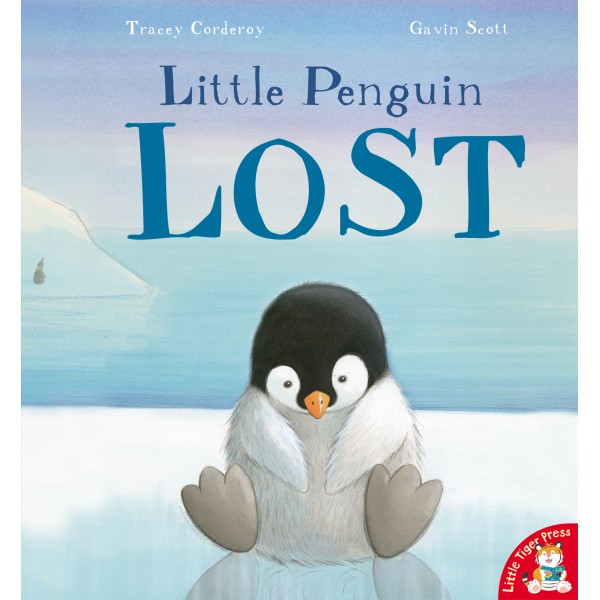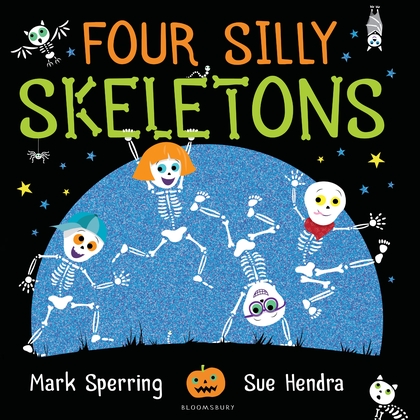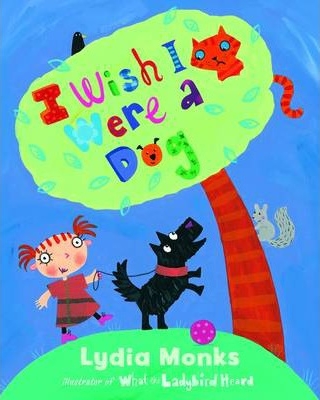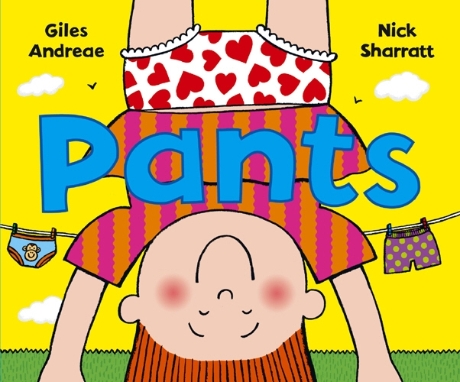Literary Learning Activities – Invite Children To Investigate Ice Cubes, Dance Like A Skeleton And Choose Between Cats And Dogs

Hilary White offers four more inspiring reads in her latest selection of literacy ideas for early years

- by Hilary White

This round of reading ideas features Little Penguin Lost, Pants, I Wish I Were a Dog and Four Silly Skeletons.
Little Penguin Lost
Tracey Corderoy, Little Tiger Press
Sockybug
 Talk about how Plip the penguin takes his sockybug toy wherever he goes, the worry and sadness he feels when Sockybug gets lost, and his relief when the toy is found. Help the children to make their own ‘sockybug’ toys. Using fabric pens, decorate an old sock, fill it with soft toy stuffing and sew up the opening. Develop the activity by letting the children experiment with different stuffing – sand, lentils, fabric scraps, crumpled tissue. Which do they prefer? Encourage each child to give their sockybug a name.
Talk about how Plip the penguin takes his sockybug toy wherever he goes, the worry and sadness he feels when Sockybug gets lost, and his relief when the toy is found. Help the children to make their own ‘sockybug’ toys. Using fabric pens, decorate an old sock, fill it with soft toy stuffing and sew up the opening. Develop the activity by letting the children experiment with different stuffing – sand, lentils, fabric scraps, crumpled tissue. Which do they prefer? Encourage each child to give their sockybug a name.
Investigating ice Look at the icy setting for Little Penguin Lost, linking your discussion to the children’s experience of snow and ice. Make ice blocks containing small plastic penguins, and challenge the children to free them. Can they break the ice? What happens when you pour on hot/cold water, or sprinkle on salt? Make frozen paint ‘ice lollies’ for creating icy artworks and pretty ice cubes containing glitter, food colouring, flowers and other substances of the children’s choice. Keep an eye on small fingers getting chilled and use gloves if necessary.
Exploring with a torch When Auntie June comes to rescue the skeletons after their midnight dance, her torch beam lights the way. Using the story as a starting point, explore torches with the children. Make a dark den and switch the torch on and off so the children can experience the difference. Let the children use their torch to search for hidden items in the den. Set up a white screen and make shadow shapes, and put coloured plastic over the torch to change the colour of the light. Remember that some children dislike the dark.
Emotional impact
Picture books are perfect for exploring feelings, and the best authors are skilled at creating stories that resonate with young children. A good story for this age group should be rooted in the familiar, but also add something new. Positive endings are important – particularly if the story scenario introduces uncomfortable events. When exploring the feelings raised by a story, always make good use of the pictures. Facial expression and body language are important, and a good illustrator plays a crucial part in adding emotional depth to the words. The pictures don’t have to be naturalistic, as long as they are emotionally honest. If a depicted sad/happy/anxious/fearful/excited character rings true for you, it will also work for the children.
Tip Make your own picture books with the children: group stories, journals, theme books, counting books and alphabet books. Put blank booklets in the graphics area for drawing and mark-making.
Hilary White is a former nursery and primary teacher. As an author she has written a number of books and contributed to a range of magazines.
I wish I were… Look at how Kitty feels jealous of dogs and wishes she could be a dog rather than a cat. If the children could choose, which animal would they like to be? Encourage each child to act out their animal and talk about the reasons for their choice. Using the mixed-media illustrations in the book as inspiration, make large pictures of each animal with paint and cut-out images. Give children the option of adding a photo printout of their own faces, and encourage them to name their animal.
Four Silly Skeletons
Mark Sperring & Sue Hendra, Bloomsbury
Rattly dancing
 Look at the pictures of the skeletons dancing in the moonlight and create your own skeleton dance. Encourage the children to make their limbs as loose and floppy as they can. Add percussion instruments that produce a dry, rattly sound. You can also make your own by filling plastic bottles with rice or chickpeas, and threading bottle tops onto loops of string. Choose some creepy music to dance to, such as Saint-Saens’ ‘Danse Macabre’. Help older children create their own simple dance routine with a series of steps and movements.
Look at the pictures of the skeletons dancing in the moonlight and create your own skeleton dance. Encourage the children to make their limbs as loose and floppy as they can. Add percussion instruments that produce a dry, rattly sound. You can also make your own by filling plastic bottles with rice or chickpeas, and threading bottle tops onto loops of string. Choose some creepy music to dance to, such as Saint-Saens’ ‘Danse Macabre’. Help older children create their own simple dance routine with a series of steps and movements.
Black-and-white pictures The striking illustrations in the picture book show the white skeletons against the black sky, and silhouetted black against the moon. Try making your own black-and-white artwork. Put strips of masking tape on white paper, paint over with black and peel off. Punch shaped holes into black paper and stick onto white card. Do marble rolling with white paint on black paper and black on white. Explore white chalk on black paper and charcoal on white. What happens if you use black on black and white on white?
Exploring with a torch When Auntie June comes to rescue the skeletons after their midnight dance, her torch beam lights the way. Using the story as a starting point, explore torches with the children. Make a dark den and switch the torch on and off so the children can experience the difference. Let the children use their torch to search for hidden items in the den. Set up a white screen and make shadow shapes, and put coloured plastic over the torch to change the colour of the light. Remember that some children dislike the dark.
Emotional impact
Picture books are perfect for exploring feelings, and the best authors are skilled at creating stories that resonate with young children. A good story for this age group should be rooted in the familiar, but also add something new. Positive endings are important – particularly if the story scenario introduces uncomfortable events. When exploring the feelings raised by a story, always make good use of the pictures. Facial expression and body language are important, and a good illustrator plays a crucial part in adding emotional depth to the words. The pictures don’t have to be naturalistic, as long as they are emotionally honest. If a depicted sad/happy/anxious/fearful/excited character rings true for you, it will also work for the children.
Tip Make your own picture books with the children: group stories, journals, theme books, counting books and alphabet books. Put blank booklets in the graphics area for drawing and mark-making.
Hilary White is a former nursery and primary teacher. As an author she has written a number of books and contributed to a range of magazines.
Rhythm and rhyme The text of Pants has a strong rhythm and also contains lots of rhyming words. Have the children clap along as you read out the words, and introduce percussion instruments for beating out the rhythm. Can the children pick out the rhyming words on each page? As they get to know the book, let them fill in some of the rhyming words themselves and help older children make up their own rhymes; for example, instead of “Rich pants, Poor pants, Swinging on the door pants”, how about “Rich pants, Poor pants, Falling on the floor pants”?
I Wish I Were a Dog
Lydia Monks, Egmont
Canine or feline?
 Talk about the children’s experience of dogs and cats, and ask each child which they prefer? Explore the different characteristics of dogs and cats, focusing on the sounds and movements they make; for example, cats are slinky and mew while dogs race around barking. Role play some of the actions in the books – dogs chewing old bones and doing tricks; cats prowling and sleeping in trees. Add to the fun by making dog and cat masks and tails. After the role play, does any child want to change their mind about which they prefer?
Talk about the children’s experience of dogs and cats, and ask each child which they prefer? Explore the different characteristics of dogs and cats, focusing on the sounds and movements they make; for example, cats are slinky and mew while dogs race around barking. Role play some of the actions in the books – dogs chewing old bones and doing tricks; cats prowling and sleeping in trees. Add to the fun by making dog and cat masks and tails. After the role play, does any child want to change their mind about which they prefer?
Dog-and-cat sorting Gather different items related to dogs and cats; for example, pictures of dog/cat characters (Spot, Snoopy, Scooby Doo, Mog, Orlando, Tom Kitten), drinking bowls printed with ‘dog’ and ‘cat’, tins of food and packets of treats, collars with a name tag (dog) and a bell (cat), leads, a toy mouse, a scratching pole, balls, bones, a brush, cat and dog paw prints, and so on. Let the children explore the items, talk about how they are used and sort them into ‘dog’ and ‘cat’. Which items might work for both?
I wish I were… Look at how Kitty feels jealous of dogs and wishes she could be a dog rather than a cat. If the children could choose, which animal would they like to be? Encourage each child to act out their animal and talk about the reasons for their choice. Using the mixed-media illustrations in the book as inspiration, make large pictures of each animal with paint and cut-out images. Give children the option of adding a photo printout of their own faces, and encourage them to name their animal.
Four Silly Skeletons
Mark Sperring & Sue Hendra, Bloomsbury
Rattly dancing
 Look at the pictures of the skeletons dancing in the moonlight and create your own skeleton dance. Encourage the children to make their limbs as loose and floppy as they can. Add percussion instruments that produce a dry, rattly sound. You can also make your own by filling plastic bottles with rice or chickpeas, and threading bottle tops onto loops of string. Choose some creepy music to dance to, such as Saint-Saens’ ‘Danse Macabre’. Help older children create their own simple dance routine with a series of steps and movements.
Look at the pictures of the skeletons dancing in the moonlight and create your own skeleton dance. Encourage the children to make their limbs as loose and floppy as they can. Add percussion instruments that produce a dry, rattly sound. You can also make your own by filling plastic bottles with rice or chickpeas, and threading bottle tops onto loops of string. Choose some creepy music to dance to, such as Saint-Saens’ ‘Danse Macabre’. Help older children create their own simple dance routine with a series of steps and movements.
Black-and-white pictures The striking illustrations in the picture book show the white skeletons against the black sky, and silhouetted black against the moon. Try making your own black-and-white artwork. Put strips of masking tape on white paper, paint over with black and peel off. Punch shaped holes into black paper and stick onto white card. Do marble rolling with white paint on black paper and black on white. Explore white chalk on black paper and charcoal on white. What happens if you use black on black and white on white?
Exploring with a torch When Auntie June comes to rescue the skeletons after their midnight dance, her torch beam lights the way. Using the story as a starting point, explore torches with the children. Make a dark den and switch the torch on and off so the children can experience the difference. Let the children use their torch to search for hidden items in the den. Set up a white screen and make shadow shapes, and put coloured plastic over the torch to change the colour of the light. Remember that some children dislike the dark.
Emotional impact
Picture books are perfect for exploring feelings, and the best authors are skilled at creating stories that resonate with young children. A good story for this age group should be rooted in the familiar, but also add something new. Positive endings are important – particularly if the story scenario introduces uncomfortable events. When exploring the feelings raised by a story, always make good use of the pictures. Facial expression and body language are important, and a good illustrator plays a crucial part in adding emotional depth to the words. The pictures don’t have to be naturalistic, as long as they are emotionally honest. If a depicted sad/happy/anxious/fearful/excited character rings true for you, it will also work for the children.
Tip Make your own picture books with the children: group stories, journals, theme books, counting books and alphabet books. Put blank booklets in the graphics area for drawing and mark-making.
Hilary White is a former nursery and primary teacher. As an author she has written a number of books and contributed to a range of magazines.
All friends together Using the penguins’ friendship with Wal-the-Wump as a starting point, talk about the fun we can have when we play with our friends. Help the children to take photos of their friends playing together. Print out the photos and discuss them with the group, focusing on the play activities and how being with our friends makes us feel (happy, excited, giggly and so on). Scribe the children’s words to make captions and speech bubbles for the photos, and turn them into either a ‘Book of Friends’ or a ‘Friendship Frieze’.
Pants
Giles Andreae & Nick Sharratt, Random House
Pretty pants
 Look at the various patterned pants in the book. Which do the children like best? Provide cut-out pant shapes, paint, printing materials and collage scraps, and let the children decorate their pants however they wish. Encourage older children to use the pictures in the book as inspiration, for example, geometric shapes, strips of lace or choosing a favourite motif such as cars. You can also do this activity with pant shapes cut from fabric. Use fabric paints and pens, and help older children sew on buttons, bows and other details.
Look at the various patterned pants in the book. Which do the children like best? Provide cut-out pant shapes, paint, printing materials and collage scraps, and let the children decorate their pants however they wish. Encourage older children to use the pictures in the book as inspiration, for example, geometric shapes, strips of lace or choosing a favourite motif such as cars. You can also do this activity with pant shapes cut from fabric. Use fabric paints and pens, and help older children sew on buttons, bows and other details.
All sorts of pants An interactive display of pants enables the children to play with different concepts. Gather a variety of children’s pants, including large, small, white, coloured and patterned. Let the children explore them freely. While they play, encourage them to match the pants (same colour, same size) and sort into groups (patterned/plain, large/small). Put up a washing line near the display so that pairs and groups of pants can be pegged up. Making ‘pants’ picture cards allows you to introduce a wider variety of colours, patterns and opposites.
Rhythm and rhyme The text of Pants has a strong rhythm and also contains lots of rhyming words. Have the children clap along as you read out the words, and introduce percussion instruments for beating out the rhythm. Can the children pick out the rhyming words on each page? As they get to know the book, let them fill in some of the rhyming words themselves and help older children make up their own rhymes; for example, instead of “Rich pants, Poor pants, Swinging on the door pants”, how about “Rich pants, Poor pants, Falling on the floor pants”?
I Wish I Were a Dog
Lydia Monks, Egmont
Canine or feline?
 Talk about the children’s experience of dogs and cats, and ask each child which they prefer? Explore the different characteristics of dogs and cats, focusing on the sounds and movements they make; for example, cats are slinky and mew while dogs race around barking. Role play some of the actions in the books – dogs chewing old bones and doing tricks; cats prowling and sleeping in trees. Add to the fun by making dog and cat masks and tails. After the role play, does any child want to change their mind about which they prefer?
Talk about the children’s experience of dogs and cats, and ask each child which they prefer? Explore the different characteristics of dogs and cats, focusing on the sounds and movements they make; for example, cats are slinky and mew while dogs race around barking. Role play some of the actions in the books – dogs chewing old bones and doing tricks; cats prowling and sleeping in trees. Add to the fun by making dog and cat masks and tails. After the role play, does any child want to change their mind about which they prefer?
Dog-and-cat sorting Gather different items related to dogs and cats; for example, pictures of dog/cat characters (Spot, Snoopy, Scooby Doo, Mog, Orlando, Tom Kitten), drinking bowls printed with ‘dog’ and ‘cat’, tins of food and packets of treats, collars with a name tag (dog) and a bell (cat), leads, a toy mouse, a scratching pole, balls, bones, a brush, cat and dog paw prints, and so on. Let the children explore the items, talk about how they are used and sort them into ‘dog’ and ‘cat’. Which items might work for both?
I wish I were… Look at how Kitty feels jealous of dogs and wishes she could be a dog rather than a cat. If the children could choose, which animal would they like to be? Encourage each child to act out their animal and talk about the reasons for their choice. Using the mixed-media illustrations in the book as inspiration, make large pictures of each animal with paint and cut-out images. Give children the option of adding a photo printout of their own faces, and encourage them to name their animal.
Four Silly Skeletons
Mark Sperring & Sue Hendra, Bloomsbury
Rattly dancing
 Look at the pictures of the skeletons dancing in the moonlight and create your own skeleton dance. Encourage the children to make their limbs as loose and floppy as they can. Add percussion instruments that produce a dry, rattly sound. You can also make your own by filling plastic bottles with rice or chickpeas, and threading bottle tops onto loops of string. Choose some creepy music to dance to, such as Saint-Saens’ ‘Danse Macabre’. Help older children create their own simple dance routine with a series of steps and movements.
Look at the pictures of the skeletons dancing in the moonlight and create your own skeleton dance. Encourage the children to make their limbs as loose and floppy as they can. Add percussion instruments that produce a dry, rattly sound. You can also make your own by filling plastic bottles with rice or chickpeas, and threading bottle tops onto loops of string. Choose some creepy music to dance to, such as Saint-Saens’ ‘Danse Macabre’. Help older children create their own simple dance routine with a series of steps and movements.
Black-and-white pictures The striking illustrations in the picture book show the white skeletons against the black sky, and silhouetted black against the moon. Try making your own black-and-white artwork. Put strips of masking tape on white paper, paint over with black and peel off. Punch shaped holes into black paper and stick onto white card. Do marble rolling with white paint on black paper and black on white. Explore white chalk on black paper and charcoal on white. What happens if you use black on black and white on white?
Exploring with a torch When Auntie June comes to rescue the skeletons after their midnight dance, her torch beam lights the way. Using the story as a starting point, explore torches with the children. Make a dark den and switch the torch on and off so the children can experience the difference. Let the children use their torch to search for hidden items in the den. Set up a white screen and make shadow shapes, and put coloured plastic over the torch to change the colour of the light. Remember that some children dislike the dark.
Emotional impact
Picture books are perfect for exploring feelings, and the best authors are skilled at creating stories that resonate with young children. A good story for this age group should be rooted in the familiar, but also add something new. Positive endings are important – particularly if the story scenario introduces uncomfortable events. When exploring the feelings raised by a story, always make good use of the pictures. Facial expression and body language are important, and a good illustrator plays a crucial part in adding emotional depth to the words. The pictures don’t have to be naturalistic, as long as they are emotionally honest. If a depicted sad/happy/anxious/fearful/excited character rings true for you, it will also work for the children.
Tip Make your own picture books with the children: group stories, journals, theme books, counting books and alphabet books. Put blank booklets in the graphics area for drawing and mark-making.
Hilary White is a former nursery and primary teacher. As an author she has written a number of books and contributed to a range of magazines.











